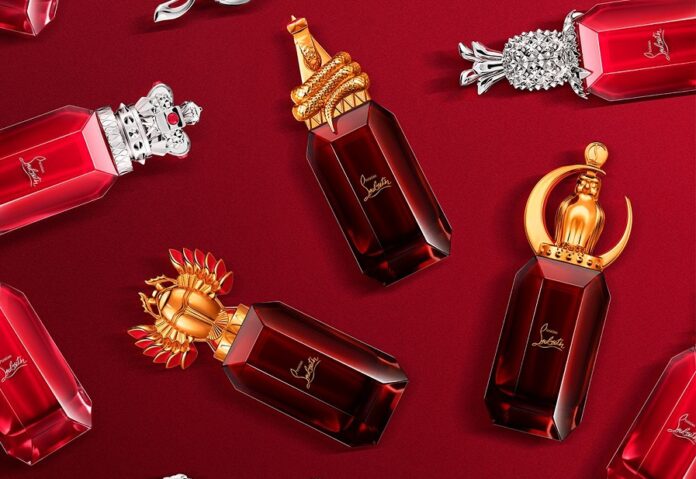DUBAI: Scent is an essential part of the beauty regimes of Arab men and women. According to Euromonitor, the fragrance market in the Middle East is projected to reach $4.4 billion in 2027, with Saudi Arabia and the UAE making up the region’s two largest markets for scents.
These statistics prove extremely beneficial for the revenue of luxury brands, many of which have produced perfume lines crafted specifically for regional consumers.
“The Middle Eastern consumers, they are really in love with perfume,” said the renowned French nose Fanny Bal, who recently dreamed up Loubiprince, one of the musk-infused scents that makes up Christian Louboutin Beauty’s unisex fragrance collection launched exclusively for the region.
Loubiprince is the brainchild of French nose Fanny Bal. Supplied
“Fragrance is part of the culture in the Middle East. It goes way deeper than in any other region in the world,” she added.
When it comes to their preferences, Saudi Arabia and the UAE both favour traditional scents, and tend to gravitate towards perfumes boasting potent ingredients such as oud and musk, she said.
“It was very interesting developing the fragrances because you can go deeper in terms of intensity and the choice of the ingredients. Unlike in Europe or America, where consumers prefer fruity or floral scents, we were able to explore stronger notes that we wouldn’t typically use for the European market,” said Thomas James, Chief Brands Officer for Niche Brands at Puig. “For instance, we wouldn’t use incense for European customers, but in the Middle East, of course, incense is so important.”
For this specific fragrance, Bal — who has conceived perfumes for Givenchy, Frederic Malle, Issey Miyake and even popstar Shakira — looked at ingredients that have become synonymous with Middle Eastern fragrances, including resin, amber, spice and sandalwood.
The three-piece fragrance collection pays homage to the Middle East. Supplied
There are two other fragrances that make up the exclusive Louboutin collection: Loubicharme and Loubiluna by French perfumer Christophe Raynaud.
Loubiluna is a blend of fig milk, cedar wood and papyrus, while Loubicharme boasts floral notes of geranium and rose balanced by incense and patchouli.
In addition to the ingredients, Christian Louboutin also paid homage to the region in the presentation of each scent. They come in an opulent red bottle with a gold cap depicting a scarab beetle, pyramid and a crescent moon.
Bal reveals that Louboutin’s roots served as the starting point of the collection. The designer, best known for his red-soled footwear, was born in Paris to a French mother and an Egyptian father, a discovery he only made recently. The godfather of part-Egyptian model Elisa Sednaoui, he has always felt a connection to the North African country. He owns property in Luxor, a purchase made well before he discovered his heritage.
For instance, one of the main ingredients used in the perfumes is papyrus, a thick paper-like material that was used in ancient Egypt for writing on. “When you think of papyrus, you also think of Egypt. Perfumers don’t use papyrus often, but it made sense with Louboutin’s story,” shared Bal.

